We have been covering some outstanding soldiers here at Biographics, lately. Today’s protagonist is no exception and would probably rank among the very top because of his determination, courage, tactical competence and resilience.
This is the extraordinary story of Master Sergeant Raul ‘Roy’ Benavidez, the Lazarus soldier, and of his three lives. This outstanding individual never surrendered in the face of adversity, from childhood to military life. Those who know his story mostly remember him for a six hour Calvary, during which, to great personal sacrifice he held at bay an entire battalion of North Vietnamese infantry to save eight wounded comrades. But how did he get there? And what happened afterwards?
Let’s begin with a difficult childhood in Texas …
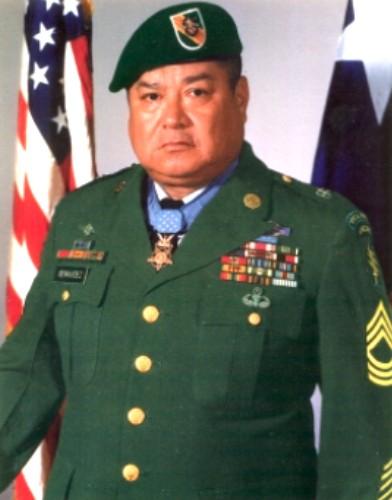
Young Roy
Raul Perez Benavidez, also known as ‘Roy’ was born in Cuero, Texas, on the 5th of August 1935. Roy was born in a family of Mexican Americans established in DeWitt county, Texas.
Roy’s father, Salvador, worked as a sharecropper. He was married to Teresa Perez, an American Yaqui Indian. The childhood of Roy was not a happy one. On the 7th of November 1938, Salvador died of tuberculosis, aged only 27. Roy was only three.
Four years later, Teresa also died, again from tuberculosis. Roy and his younger brother Roger were sent to live with their Uncle Nicholas, Aunt Alejandra and eight cousins at El Campo, Texas.
Roy dropped out of school during the seventh grade: his help was needed to support the family. So, he had to forego an education to work in the fields, picking sugar beets and cotton.
Texas in the early ‘50s did not offer many prospects to a farm labourer who was also a school dropout. Roy found a chance for a career, and a better future, in the military.
In 1952, aged 17, Roy enlisted in the Texas National Guard. Two years later Roy joined the US Army as Private Benavidez, receiving his infantry training at Fort Ord, California.
Benavidez service duties soon took him out of the country, first to South Korea and then Germany. Upon his return to the States in 1959 he reunited with Hilaria Coy, a childhood sweetheart, and the two married on the 7th of June. They went on to have three children: Noel, Yvette and Denise.
By now Army life for Benavidez was not only a means to provide for his family, it was ‘life’, pure and simple, a life that he enjoyed and was very good at. He expanded his training and in 1959 he attended the military police school in Fort Gordon, Georgia.
Benavidez racked up qualifications, becoming also a paratrooper and was assigned to the 82nd Airborne Division.
By 1965 Benavidez was on a tour of duty in Vietnam, acting as a military adviser to the South Vietnamese Army.
One day he was on a solo patrol mission, which according to some accounts was part of a covert operation: its aim was to gather intelligence of possible Vietcong infiltration within the South Vietnamese Army.
That was a fateful day. Benavidez stepped on a land mine and the deflagration left him badly wounded, with serious bone and cartilage damage to his spine. He was immediately evacuated to Brooke Army Hospital in San Antonio, then to Fort Sam, Houston.
The Army doctors gave him a devastating diagnosis: he would never walk again, meaning they had to discharge him from the military.
They might as well thrown him on top of another mine. To him and his family, active service meant making a living, it meant ‘life’. A discharge was equivalent to death.
Against the wall
What Roy Benavidez did in the following weeks would have been described as a miracle, in another place and another time. Ignoring medical advice, Benavidez went on a recovery programme on his own, in secret. Every night, he slipped from his bed and on to the floor. Using his elbows and chin, he dragged his body to the nearest wall. Then, in a pain so excruciating that left him in tears, Roy would set himself up against the wall and propped himself to a standing position.
He then spent the night trying to just wiggle his toes, right foot, left foot, and then again. Every single night. He was determined to walk again and to return to Vietnam. He felt a sense of duty towards his fellow comrades, many of whom came back from their tours of duty with limbs missing, truly unable to walk again.
Night after night, Benavidez continued with his ritual. Sometimes he was caught by the nurses, given some sleeping pills, and put back to bed. But most nights he managed to keep the appointment with the wall, and he recovered most of his mobility.
After nine months, a doctor showed up with his discharge papers. Benavidez told him to hold on and to watch what he was able to do: Roy jumped out of bed and stood in front of the doctor, almost fainting because of his back pain.
The doctor was impressed and told him
“Benavidez, if you walk out of this room, I will tear the papers!”
And Benavidez walked out of the room, out of the hospital. Like St Lazarus, he had walked out of his grave and into the start of his second life.
Tango Mike Mike: Six hours in hell
After leaving the hospital Roy Benavidez spent months of gruelling rehabilitation and training at Fort Bragg, North Carolina. This is the main training centre for the US Army Special Forces, also known as Green Berets.
He entered Fort Bragg with a limp. Soon, he was running five to ten miles and dropping 1500 push ups every single day, while perfecting his parachuting skills.
In January of 1968 Staff Sergeant Roy Benavidez was back in Vietnam. He had been assigned to Detachment B56, 5th Special Forces Airborne Group, with code name ‘Tango Mike Mike’.
In NATO radio code these words simply indicate the letters T – M – M. Apparently Benavidez himself had selected these letters, an acronym which stood for
It would take only a couple of months before the Mean Mexican launched into the military action that would eventually earn him a Medal of Honour. He would later describe what happened as
‘Six hours in hell’.
On the 2nd of May 1968, Benavidez was at the Loc Ninh Green Beret outpost, near the Cambodian border, attending Mass. At 1:30 PM, the radio came alive with a panicked request for help.
It came from a squad of 12 men, a Reconnaissance Team that had been dropped by helicopter west of Loc Ninh, tasked with collecting intelligence on enemy activity. The team included nine Vietnamese Montagnards, or ‘Mountain Men’. These are an ethnic group which had sided with US and South Vietnam against the Communist North. The team also included 3 US service men: Sergeant First Class Leroy Wright, Staff Sergeant Lloyd “Frenchie” Mousseau and Specialist Four Brian O’Connor.
The patrol had stumbled upon an entire infantry battalion of the North Vietnam People’s Army, the NVA, numbering up to 1,000 men. They had been quickly surrounded. Three helicopters had already attempted to extract them, but intense enemy fire had prevented them from landing.
Benavidez was listening with increased concern to the radio. He knew the men involved, and especially Sgt Leroy Wright was a good friend.
Back in April, Benavidez and another comrade were on an intelligence mission deep beyond enemy lines, when the other soldier had been wounded. A helicopter had come to extract them. Unable to land, the chopper had lowered two ropes for the men to hook onto. During the flight, the two ropes were badly tangled and were about to break. Sgt Wright, who was on the helicopter had lowered himself with another rope, disentangled the knot, and had saved Benavidez’ life.
Tango Mike Mike took a snap decision: he would help Leroy and the others. They would make it back alive.
As a fourth rescue helicopter was being readied for another attempt, Benavidez jumped on board, armed only with a knife and his medical kit.
The chopper reached the site of the engagement: the reconnaissance team was surrounded by the NVA soldiers. Enemy fire prevented an immediate landing, so the aircraft had to move 75 yards away from Leroy Wright and his men.
75 yards = 68.65 metres
Benavidez jumped to the ground and run towards the men, when a Vietnamese bullet hit him in his right leg. He fell but was immediately up and running.
Next, it was the full blast of a grenade to slam him to the ground, his face covered in shrapnel. That, too, was not enough to stop him: he got up again and reached the patrol, that had split into two groups.
Four of the Montagnards lay dead. He took one of their AK assault rifles and then focused on treating the wounded. Luckily, he had brought along plenty of morphine for those who were screaming in pain.
The only way to stop the overwhelming NVA battalion was to call in an air strike. Benavidez did so via radio, also requesting another helicopter. Another bullet pierced his right thigh.
Thankfully, the oncoming chopper succeeded to land and Benavidez dragged the dead and wounded on board. The NVA soldiers intensified their fire against the aircraft, which prompted another act of sacrifice from Benavidez:
Rather than jumping aboard, he ordered the pilot to fly to the second group, while he provided suppressive fire from the ground.
Benavidez spotted Leroy Wright. He was on the ground, not far from the second group. Dead.
Instinctively, Benavidez removed from Wright’s body all documents containing their unit’s radio codes and call signs. These codes would have made for useful intelligence in the hands of the NVA.
Then everything went wrong, way more wrong.
First, a bullet hit him in the stomach, the third shot he had to endure so far. Then, a grenade exploded behind his back, with more shrapnel piercing his flesh. Worse still, the pilot was shot dead, and the helicopter crashed.
Benavidez limped back to the wreckage and was able to extract his wounded comrades. Their only way to safety was to call in a second air strike and a further chopper. But first, he quickly set up a defence perimeter, all the while encouraging, directing and caring for the wounded men. Throughout the fighting, Benavidez, a devout Catholic, made the sign of the cross so many times that his arms
“were going like an airplane propeller”
Jets and helicopter gunships finally returned to harass the enemy. By this time, Benavidez was almost rendered blind from all the blood in his eyes, so he had to rely on his sense of hearing to direct the airstrikes.
The new rescue chopper finally landed. Benavidez carried his comrades to the safety of the helicopter, one at the time. During the second trip, while he was shoving ‘Frenchie’ Mousseau aboard, an NVA soldier closed up to him and clubbed him on the jaw with the butt of his rifle.
Benavidez fell, then got up, just in time to stop the soldier’s bayonet … with his bare right hand. The Vietnamese managed to slash also his left forearm, before Benavidez fought back with his Bowie knife, stabbing him multiple times.
After having secured ‘Frenchie’ on board, Benavidez spotted two more NVA troops advancing, shooting towards the chopper. He grabbed an AK-47 and fired at them, silencing them for good.
His mission was not finished. With little strength remaining in his body Benavidez rushed back to the defence perimeter to rescue the last Montagnard and collect all classified documents.
Benavidez was in critical condition.
He was bleeding from numerous wounds.
He was blinded by haemorrhage in his eyes.
He had a dislocated jaw.
His intestines were exposed because of a gun shot in the abdomen. He had to hold them in with his hand.
But everybody else was safe, so he allowed himself to be pulled into the chopper. On route to Loc Ninh, Benavidez closed his eyes.
When the chopper landed at the field hospital, the medics tended immediately to the wounded and collected the bodies of the dead soldiers. One at the time, they were placed in the ordnance black plastic body bags.
Amongst them, there was Staff Sergeant Raul ‘Roy’ Benavidez, code name ‘Tango Mike Mike’.
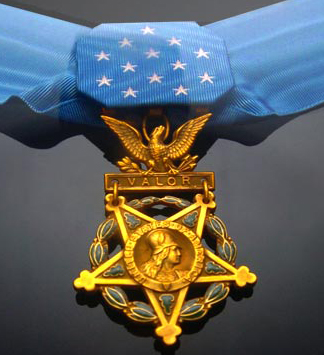
The Third Life of Sgt Benavidez
Jerry Cottingham, a friend, recognized Roy’s body and screamed: “That’s Benavidez! Get a doc!”
When the doctor arrived, he placed his hand on Roy’s chest to check for a heartbeat. He shook his head, saying
“There’s nothing I can do for him.”
The doctor proceeded to zip up the body bag. Half of Sgt Benavidez’ body had already been swallowed by the sinister black bag. Then, the doctor closing the zipper had the surprise of his life. The body of Benavidez … spat at him!
The surprised doctor reversed Roy’s condition from ‘dead’ to:
“He won’t make it, but we’ll try”.
Roy had not surrendered. He was in critical condition having suffered more than 30 wounds. He could not talk because of the broken jaw and his eyes had been sealed shut by congealed blood.
But Benavidez was still alive! Unable to communicate otherwise, he had spat to attract the doctor’s attention, and it had worked!
Staff Sgt Benavidez had saved the lives of at least eight men to great personal sacrifice. He spent almost a year in hospitals to recover from his injuries.
He had seven major gunshot wounds, one of them having barely missed the heart.
Both arms had been slashed by a bayonet.
Benavidez had shrapnel in his head, scalp, shoulder, buttocks, feet, and legs.
His right lung was destroyed. He had injuries to his mouth and back of his head from being clubbed with a rifle butt.
The Medal of Honour citation would later acknowledge that:
“His fearless personal leadership, tenacious devotion to duty, and extremely valorous actions in the face of overwhelming odds were in keeping with the highest traditions of the military service and reflect the utmost credit on him and the United States Army.”
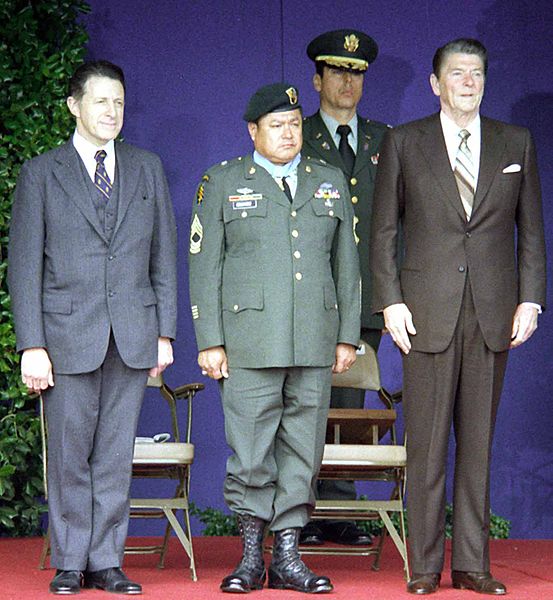
How did he do it?
How did Benavidez manage to accomplish these actions, which are short of miraculous? How do soldiers, and other individuals in high risk situations, accomplish feats that appear super-human?
Benavidez later claimed that he was simply doing his duty. And to survive six hours in hell, he clearly had a strong sense of duty: he was motivated to protect his friends and to save the classified documents. Losing the intelligence may have endangered further lives.
In addition to a strong sense of purpose, Roy Benavidez was no fresh recruit. He was an experienced sergeant of the Green Berets, the Special Forces of the US Army. In the 1960s their typical training included parachuting, marksmanship, close quarter combat, and extensive medical first-aid drills – which made of virtually every Green Beret a trained paramedic. A skill which Benavidez put to good use.
And yet, what is really astounding is how he managed to simply stay standing up after six hours of exhausting, non-stop action and a total of 36 wounds which must have caused excruciating pain.
He did administer morphine to his comrades, but not to himself, otherwise he would not have had the lucidity necessary to plan on the spot the defensive perimeter, to retrieve the intel, to fight back against the NVA soldiers. The answer may lie in another drug, one created by the human body: adrenaline.
The word ‘adrenaline’ today is used almost as an abstract term to indicate an extremely excitable and alert state of being. In practical terms, adrenaline is a hormone and neurotransmitter produced in the centre of the adrenal glands.
Adrenaline is released into the bloodstream and conveys nerve impulses to various organs. Its effects are to prepare the body for the ‘fight or flight’ response in times of extreme stress. In other words, it sets the body up for vigorous, sudden action.
The key effects of the onset of adrenaline include increased heart rate and blood pressure, expansion of the air passages, and redistribution of blood to the muscles. This explains the increased strength, speed, stamina and pain threshold experienced by individuals who like Benavidez find themselves in a life and death scenario. The effects are not limited to the body, though: this hormone also maximises blood glucose levels, increasing its concentrations primarily in the brain.
This is like providing a sudden boost of fuel to one’s cognitive function, which enabled Benavidez to sustain six hours of intense fighting, but most of all six hours of brilliant tactical leadership and medical and evacuation work.
What was the reward for his actions?
Medal of Honor
Staff Sergeant Benavidez was absolutely worthy of receiving the highest US Army accolade, the Congressional Medal of Honour. But this did not happen immediately. As he was recovering from his wounds, in 1968, he was awarded the Distinguished Service Cross, also prestigious, but not as much as ‘The’ Medal. But the process to obtain the Cross was shorter, and his commanding officer was not sure if Benavidez would survive.
When Roy Benavidez, after one year in hospital, returned to active service, his new commander Colonel Ralph Drake undertook a campaign to ensure that he received the Medal of Honour.
But there were two problems at this stage.
First: there wasn’t any witness from the US military that could confirm the full extent of his actions.
Second: according to Benavidez’ children, the process took so long because the action had taken place in Cambodian territory. The Government could not admit to taking part in such engagements in a Country not involved in the Vietnam war, at least nominally.
Finally, in 1980 a witness emerged, it was Brian O’Connor, the Specialist, who had survived the battle. He had been living in the Fiji, but during a trip to Australia he heard about the Benavidez case.
O’Connor gladly volunteered to write a full report on Roy’s actions and then flew to Washington to present it in person to the Government.
At last, on the 24th of February 1981, President Reagan presented the Medal of Honour to Roy Benavidez. He was the last of the Vietnam-era military to be presented with a medal from that war.
One last fight
During the past decade Benavidez had rose to the rank of Master Sergeant and had sought to advance his education, attaining his GED and then a college degree. During all this time he suffered from chronic pain from his injuries.
In 1976, Roy Benavidez decided to retire from the Army, and was granted some well-deserved disability payments on top of his pension.
When President Reagan had presented Roy Benavidez with the Medal of Honour, he had asked the former sergeant to speak to young people about the importance of pursuing education.
Roy did just that: the best part of his time as a retired Sergeant, he spent it visiting schools to stress the need for the education he never had as a child. He also became a prolific motivational speaker, delivering talks about his extraordinary life experiences to audiences of students, military personnel and businesses.
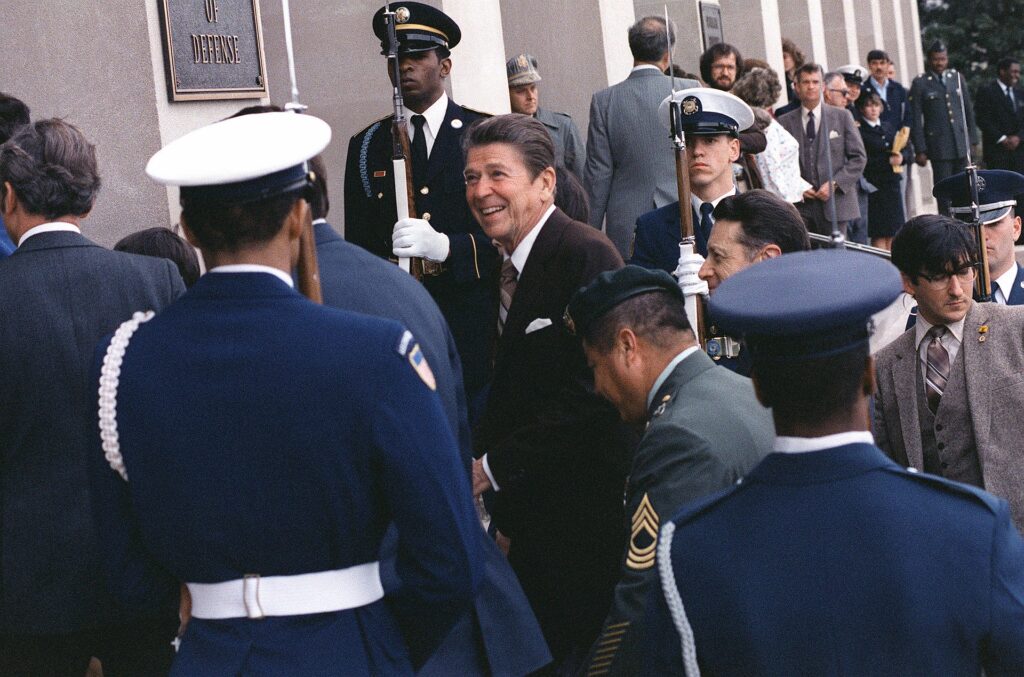
But his days of fighting were not done.
Shortly before Memorial Day 1983, Roy Benavidez released statements to warn that the Social Security Administration planned to cut off disability payments to him and other Vietnam War veterans.
A Federal cost-cutting plan had terminated the disability assistance for 350,000 people over the preceding two years. It was now impacting also Benavidez.
The retired Sergeant had developed a friendship with Ronald Reagan after being decorated. He would not shy away from leveraging it. He said
“I don’t like to use my Medal of Honour for political purposes or personal gain, but if they can do this to me, what will they do to all the others?”
10 days after Roy’s statements to the press, the Secretary of Health and Human Services, Margaret M. Heckler, said the disability reviews would become more
”humane and compassionate.”
Benavidez continued his campaign: he testified to the House Select Committee on Aging that the same administration that had given him a medal, was now withdrawing his benefits, which were part of his rights as a wounded veteran. He then proceeded to file an appeal to an Administrative Law Court.
In July 1983, the Court overturned the initial decision and sanctioned that Benavidez continue receiving payments. It was an important precedent that would help many more veterans.
From then on, Benavidez continued his engagements as a speaker in support of education and on overcoming impossible odds.
By all accounts he was a loving father and grandfather. He did enforce quite a rigorous discipline at home, based on his Catholic faith, and he must have appeared intimidating to his daughters’ boyfriends. But as daughter Yvonne described him
‘He was the biggest teddy bear in life’
In October of 1998, after many years of struggle against diabetes, Benavidez had his right leg amputated, due to complications of the disease. He never recovered fully, and on the 29th of November, aged 63, Roy Benavidez succumbed to respiratory failure at an Army Hospital in San Antonio, Texas.
Over the years, fellow Texans paid tribute to Benavidez. Several schools, a National Guard armoury, Army Reserve centre and even a cargo of the Navy have been named after him.
Roy Benavidez life was one of struggle, sacrifice and rebirth – not once, but twice. And yet, he did not regard himself as someone special.
”The real heroes are the ones who gave their lives for their country. I don’t like to be called a hero. I just did what I was trained to do.”
One question before I leave: is there a Benavidez in your life? Somebody whose resilience and unassuming courage has inspired you? Nominate them in the comments and share this video with them!
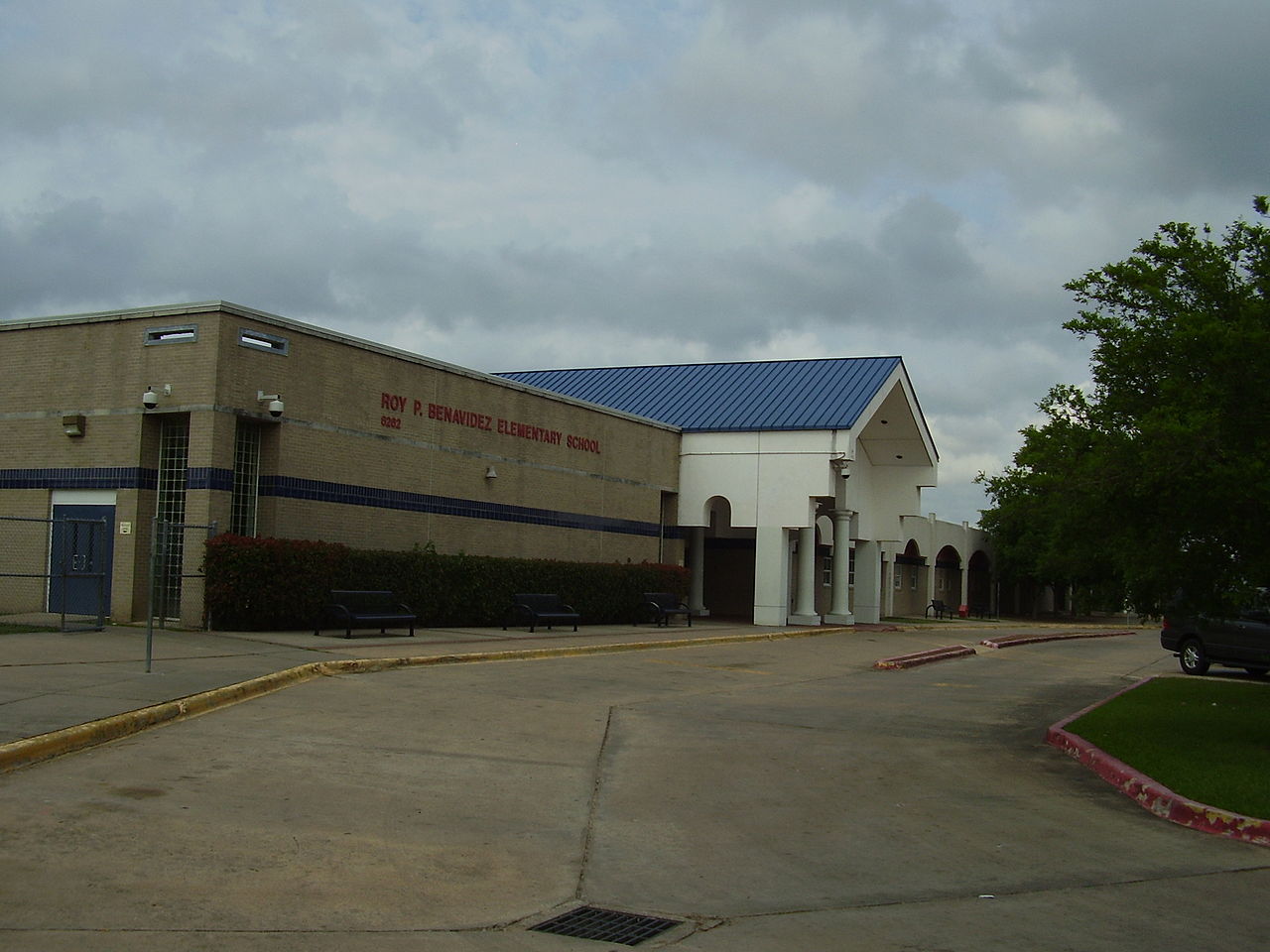
Sources:
https://www.chron.com/news/article/Benavidez-s-children-share-memories-8638998.php
https://www.nytimes.com/1998/12/04/us/roy-p-benavidez-recipient-of-medal-of-honor-dies-at-63.html
https://www.chron.com/news/article/Benavidez-s-children-share-memories-8638998.php
https://www.nytimes.com/1998/12/04/us/roy-p-benavidez-recipient-of-medal-of-honor-dies-at-63.html


